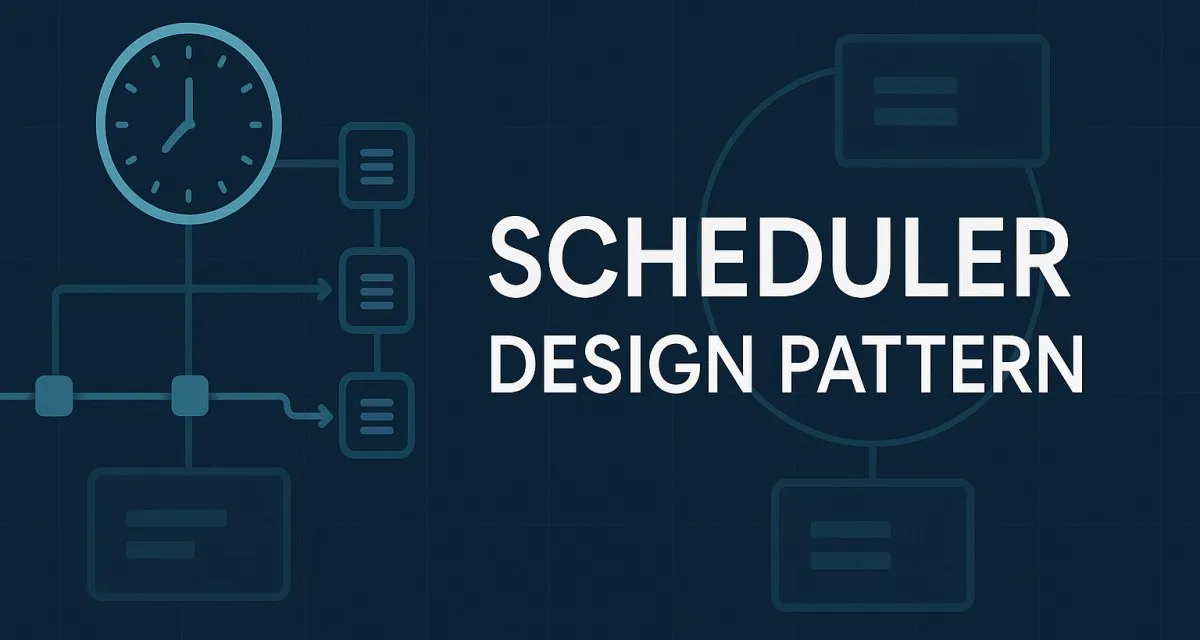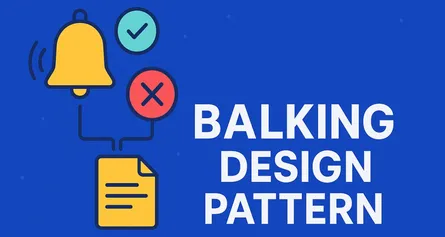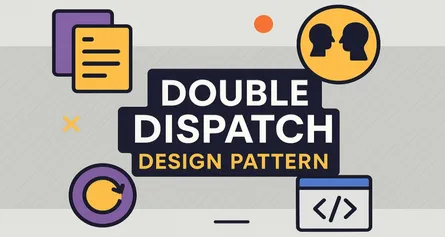
The Scheduler Design Pattern: A Practical Guide for the Architect's Toolbox
Foundations of the Scheduler Pattern
Imagine you’re building a trading platform that needs to rebalance portfolios every 24 hours. Or a logistics system that polls warehouse statuses every 5 minutes. Or maybe you’re maintaining a SaaS billing engine that sends out invoices at 1 AM UTC on the first of every month.
In each of these cases, you’ve got tasks that need to run:
- At specific times
- On recurring intervals
- With precise orchestration and control
This isn’t a one-time thing. It’s systematic. It’s predictable. It’s core to the system’s behavior.
Welcome to the Scheduler Pattern.
What Is the Scheduler Pattern?
At its heart, the Scheduler Pattern is about coordinating the execution of logic at scheduled intervals or specific times, often outside of user interaction or request-driven flows.
Unlike the Observer or Command patterns (which are often reactive), the Scheduler pattern is time-driven. Think of it like a metronome for your system — ticking away and ensuring your code dances to the right beat.
Definition
“A structural and behavioral design pattern that decouples the scheduling of operations from their execution, enabling timed or recurring execution of tasks.”
A Little History…
Historically, the need for scheduled operations showed up in mainframe batch processing — where jobs would run nightly to process transactions or reports. Fast forward to the modern cloud-native world, and you’ll still find schedulers in cron jobs, Kubernetes Jobs, background services, or distributed job queues.
But while the implementation has evolved, the pattern has stayed strikingly familiar.
Where Does the Scheduler Fit in the World of Design Patterns?
The Scheduler Pattern is best classified under behavioral patterns, because it governs how and when objects interact and behave over time.
While it isn’t part of the original GoF (Gang of Four) patterns, it’s a close cousin to:
- Command Pattern – encapsulating logic into discrete operations
- Observer Pattern – where execution is loosely coupled
- Template Method – for structuring recurring processes
In modern enterprise architecture, Scheduler is often a compound pattern, combining Command, Queue, and Strategy to handle job orchestration, dispatching, and retry policies.
Core Principles of the Scheduler Pattern
Let’s dissect what makes this pattern tick — pun intended.
1. Time-Driven Execution
At its core, the Scheduler responds to time-based triggers, not external requests. This could be:
- Recurring (every X seconds)
- Cron-style (at 2 AM every Tuesday)
- One-time delayed (run after 10 minutes)
This pulls it out of the classic request/response cycle.
2. Separation of Concern
It’s critical to separate:
- Scheduling logic (when to run)
- Execution logic (what to run)
This allows for flexible orchestration and retry policies without modifying business logic.
3. Idempotency & Retry
Schedulers often run unattended. You must assume:
- Something will fail.
- Something might run twice.
Design your jobs to be idempotent and resilient.
4. Centralized Coordination
While tasks may execute across a cluster, the scheduling intelligence should be centralized (or at least consistent) to avoid race conditions, clock drift, and missed jobs.
Key Components of the Scheduler Pattern
Let’s visualize the main moving parts:
┌────────────┐ triggers ┌──────────────┐ invokes ┌─────────────┐
│ Trigger │ ─────────────▶ │ Scheduler │ ─────────────▶ │ Executor │
└────────────┘ └──────────────┘ └─────────────┘
▲ |
| schedules ▼
┌──────────────┐
│ Job Store │
└──────────────┘Core Components Breakdown
| Component | Responsibility |
|---|---|
| Trigger | Defines when the job should fire (cron, interval, delay) |
| Scheduler | Central brain that evaluates triggers and schedules jobs |
| Job Store | Persists scheduled jobs, statuses, retries, and history |
| Executor | Executes the job logic, often in isolated context |
| Job | The unit of work encapsulating the actual business logic |
When Should You Use the Scheduler Pattern?
Here’s a rule of thumb: if it runs on a clock, you probably need a Scheduler.
Great Use Cases
- ETL Pipelines – nightly data aggregation or cleaning
- Automated Billing – monthly, daily, or trial-based invoicing
- Report Generation – email reports every Monday at 9 AM
- Monitoring and Alerts – ping services every minute and alert on downtime
- Periodic Cache Invalidation – refresh external data periodically
- System Maintenance Jobs – disk cleanups, log pruning, health checks
Avoid If
- You need high concurrency and millisecond latency (Schedulers are not real-time).
- The job logic depends heavily on user sessions or HTTP context.
- You can achieve the same effect with event-driven processing (like Kafka or pub-sub).
Architectural Smell to Watch For
If you find a
Thread.Sleep()or awhile(true)loop with delays buried in your code, it’s time to break it out into a Scheduler component.
Implementation Approaches (C# Edition)
Let’s get our hands dirty. Here, we’ll explore a robust, production-ready implementation using modern .NET (C# 12, .NET 8), BackgroundService, and Cronos (a fantastic cron parsing library).
Step 1: Define the Job Interface
public interface IScheduledJob
{
Task ExecuteAsync(CancellationToken cancellationToken);
string Name { get; }
}Every job must be self-contained, async-friendly, and cancellable. Keep them small, focused, and stateless, when possible.
Step 2: Create the Job Schedule Configuration
public class JobSchedule
{
public Type JobType { get; }
public string CronExpression { get; }
public JobSchedule(Type jobType, string cronExpression)
{
JobType = jobType ?? throw new ArgumentNullException(nameof(jobType));
CronExpression = cronExpression ?? throw new ArgumentNullException(nameof(cronExpression));
}
}We separate what to run from when to run it — classic separation of concern.
Step 3: Build the Scheduler Background Service
public class SchedulerService : BackgroundService
{
private readonly IEnumerable<JobSchedule> _schedules;
private readonly IServiceProvider _serviceProvider;
public SchedulerService(IEnumerable<JobSchedule> schedules, IServiceProvider serviceProvider)
{
_schedules = schedules;
_serviceProvider = serviceProvider;
}
protected override async Task ExecuteAsync(CancellationToken stoppingToken)
{
var cronSchedules = _schedules.Select(schedule =>
{
var cron = Cronos.CronExpression.Parse(schedule.CronExpression);
return new { schedule, cron, nextRun = cron.GetNextOccurrence(DateTimeOffset.UtcNow) };
}).ToList();
while (!stoppingToken.IsCancellationRequested)
{
var now = DateTimeOffset.UtcNow;
foreach (var job in cronSchedules)
{
if (job.nextRun.HasValue && job.nextRun.Value <= now)
{
await ExecuteJob(job.schedule, stoppingToken);
job.nextRun = job.cron.GetNextOccurrence(DateTimeOffset.UtcNow);
}
}
await Task.Delay(TimeSpan.FromSeconds(30), stoppingToken); // fine-tune as needed
}
}
private async Task ExecuteJob(JobSchedule schedule, CancellationToken ct)
{
using var scope = _serviceProvider.CreateScope();
var job = (IScheduledJob)scope.ServiceProvider.GetRequiredService(schedule.JobType);
try
{
await job.ExecuteAsync(ct);
}
catch (Exception ex)
{
// Add telemetry or retry logic here
Console.WriteLine($"Error running job {schedule.JobType.Name}: {ex}");
}
}
}This is your heartbeat. It checks which jobs are due, and runs them using DI-scoped instances — perfect for EF Core, logging, or external services.
Step 4: Register the Scheduler in Startup.cs or Program.cs
builder.Services.AddSingleton(new JobSchedule(typeof(MyBillingJob), "0 0 * * *")); // Every midnight UTC
builder.Services.AddSingleton(new JobSchedule(typeof(EmailDigestJob), "0 8 * * MON")); // Every Monday 8 AM
builder.Services.AddHostedService<SchedulerService>();
builder.Services.AddScoped<MyBillingJob>();
builder.Services.AddScoped<EmailDigestJob>();We use dependency injection for jobs to keep them testable, replaceable, and mockable.
Part 2: Strategies, Pitfalls, and Practical Wisdom
Different Implementation Strategies
By now, you’ve seen the classic in-process scheduler using BackgroundService. But let’s take it a step further—architecturally.
1. In-Process Timer-Based Scheduler
What it is:
A self-hosted scheduler that lives inside your application (like the one in Part 1), often implemented using Timer, Task.Delay, or BackgroundService.
Example:
Timer _timer = new Timer(_ => RunJob(), null, TimeSpan.Zero, TimeSpan.FromMinutes(5));Pros:
- Simple and quick to implement
- Great for monoliths and internal tools
- No external dependencies
Cons:
- Not reliable in clustered or load-balanced environments
- Doesn’t survive application restarts
- No persistent job metadata
When to use: Small apps, dev tools, or maintenance jobs.
2. Distributed Job Scheduler with Persistent Store
What it is: A scheduler that persists job metadata in a shared store (e.g., SQL, Redis), allowing multiple app instances to coordinate execution.
Example: Using Hangfire (with SQL persistence)
RecurringJob.AddOrUpdate<IMyJob>(
job => job.RunAsync(),
Cron.Hourly);Pros:
- Scales across multiple nodes
- Supports retries, dashboards, queues
- Long-running and durable
Cons:
- Added complexity
- Needs reliable storage
- Requires operational monitoring
When to use: High-availability systems, microservices, SaaS platforms.
3. Quartz.NET for Complex Scheduling
Quartz.NET is an enterprise-grade scheduling library that supports:
- Cron expressions
- Persistent job stores
- Calendars, triggers, misfire handling
Example:
IJobDetail job = JobBuilder.Create<MyJob>()
.WithIdentity("EmailDigestJob")
.Build();
ITrigger trigger = TriggerBuilder.Create()
.WithCronSchedule("0 0/5 * * * ?") // Every 5 mins
.Build();
await scheduler.ScheduleJob(job, trigger);Pros:
- Advanced scheduling semantics
- Supports clustering
- Mature, proven
Cons:
- Heavyweight compared to native solutions
- XML config can be awkward
- Steeper learning curve
When to use: Enterprises with heavy scheduling needs and ops maturity.
4. External Workflow Orchestrators (e.g., Temporal, Dapr)
What it is: Offload scheduling and orchestration to an external platform.
Example:
- Temporal.io: Durable workflows with retries, signals
- Dapr: Pub/sub and timers via sidecars
Pros:
- Ultra-reliable
- Durable, stateful
- Scales horizontally
Cons:
- Requires new tooling and platform knowledge
- Debugging can be abstracted away
When to use: Cloud-native, event-driven architectures needing fine-grained orchestration.
Real-World Use Cases
Let’s look at where the Scheduler Pattern shines in actual production systems.
Financial Systems
Use Case: Daily interest calculation Pattern Fit: Scheduler kicks off an ETL-style calculation pipeline nightly. Jobs are idempotent, audited, and retryable.
E-Commerce
Use Case: Inventory synchronization Pattern Fit: Polling external supplier APIs every X minutes to reconcile stock quantities.
Healthcare
Use Case: Appointment reminders Pattern Fit: Send SMS/Email reminders 24 hours in advance via a scheduled job queue.
SaaS Billing
Use Case: Monthly invoice generation Pattern Fit: Cron-triggered scheduler initiates billing workflows. Each tenant’s context is passed to the executor.
EdTech
Use Case: Weekly performance reports Pattern Fit: Generate PDF summaries for students every Monday at 7 AM, leveraging time zone–aware job scheduling.
Common Anti-Patterns and Pitfalls
No pattern is immune to misuse. Here are signs your Scheduler is headed off the rails.
Polling in a Loop (a.k.a. while(true) Hell)
Bad:
while (true)
{
RunJob();
Thread.Sleep(60000);
}Why it’s bad:
- Eats threads
- Doesn’t respect cancellation
- Hard to test and debug
Fix: Use Timer, Task.Delay, or BackgroundService.
Coupled Job and Schedule Logic
Bad:
public class MyJob {
public void Run() {
if (DateTime.Now.Hour == 8) { /* do stuff */ }
}
}Why it’s bad:
- Mixing scheduling with execution logic
- Not reusable or testable
Fix: Separate job class from its scheduling configuration.
No Idempotency
If a job sends 100 invoices when it runs twice instead of once… we’ve got a problem.
Fix: Design your jobs to be safe to retry (use deduplication keys, transaction boundaries, or stateful tokens).
No Observability
If jobs silently fail at 2 AM and no one knows… you’ve lost reliability.
Fix: Integrate structured logging, metrics, and alerts for:
- Job start/completion
- Duration
- Failure counts
Advantages and Benefits
Let’s get to the “why it’s worth it” part.
Predictable Execution
You know when things happen. This enables:
- Timed workflows
- SLA-based operations
- Regulatory compliance
Loose Coupling
Jobs are pluggable units. You can:
- Add new ones
- Retry failed ones
- Swap implementations
Horizontal Scalability
Especially with persistent schedulers (Hangfire, Quartz), you can scale execution across nodes safely.
Observability & Control
Schedulers can provide dashboards, retry counts, and job histories — great for ops teams.
Disadvantages and Limitations
Of course, no solution is a silver bullet.
Complexity Overhead
Adding a scheduler introduces a new operational component. You’ll need to:
- Manage job state
- Monitor failures
- Scale orchestrators
Job Design Burden
Every job must be:
- Stateless (or carefully stateful)
- Idempotent
- Exception-aware
Designing this takes discipline and experience.
Clock Drift in Clusters
When distributed schedulers are naively implemented across multiple nodes, jobs can run multiple times or be missed entirely.
Fix: Use a distributed lock or elect a scheduling leader.
Testing Pattern Implementations
You might be wondering—how do I test this stuff?
Unit Testing Jobs
Keep jobs logic-focused and small.
[Test]
public async Task SendWelcomeEmail_Success() {
var job = new SendWelcomeEmailJob(...);
await job.ExecuteAsync(CancellationToken.None);
// assert email sent
}Time Simulation
Use SystemClock abstraction to simulate time.
public interface IClock {
DateTimeOffset Now { get; }
}Use FakeClock in tests to simulate “fast forward” without waiting.
Integration Testing with In-Memory Schedulers
Tools like Hangfire.MemoryStorage let you test job pipelines end-to-end without hitting real queues or timers.
Common Testing Challenges
- Race conditions in parallel job runs
- Time-dependent behavior (e.g. jobs that only run at 2 AM)
- Retrying logic and error handling
Mitigate with:
- Mocked time
- Job tracking flags
- Functional-style execution with clear side effects
Conclusion and Best Practices
Let’s recap what we’ve learned and leave you with some guiding principles.
Key Takeaways
- The Scheduler Pattern orchestrates time-based behavior.
- Separate what runs from when it runs.
- Choose the right scheduler type for your scale and complexity.
- Emphasize idempotency, observability, and loose coupling.
- Watch out for pitfalls: tight loops, poor retries, clock drift.
Best Practices Checklist
| Practice | Description |
|---|---|
| Use DI-friendly job classes | Keep jobs scoped and testable |
| Keep jobs small and stateless | Each job should do one thing well |
| Use persistent schedulers for HA | Hangfire, Quartz, or Temporal |
| Make jobs idempotent | Ensure safe re-execution |
| Add observability | Log, trace, and monitor execution |
| Avoid hard-coded time logic | Inject scheduling metadata |
| Test with fake clocks | Don’t wait for time to pass |
| Respect cancellation tokens | Don’t trap threads |
Architect’s Final Thought
In many systems, the scheduler becomes the heartbeat — the central pulse that keeps operations ticking. Treat it with the same design rigor as your APIs or databases.
When you architect with the Scheduler Pattern, you’re shaping how time flows through your software. And that’s a powerful thing.
Share this article
Help others discover this content
About Sudhir mangla
Content creator and writer passionate about sharing knowledge and insights.
View all articles by Sudhir mangla →




